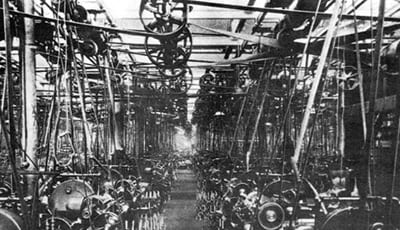Our History
1918
Vibration Specialty Corporation was incorporated in 1918 by Nicholas Wladimir Akimoff. This was 2 years after he had submitted his original patent for a static /dynamic balancing machine. In 1918, he resubmitted his patent with an improved version of the machine.
N. W. Akimoff was a Russian immigrant. By the time Akimoff arrived in the USA, he was already noted for his ingenuity in the world of mechanics. His balance machine, while a breakthrough in its time, is still used today coupled with current technology to be, perhaps, the best portable balance machine available.
The Akimoff machine incorporates mechanical resonance to realize an extremely accurate reading at relatively slow speeds (rpm). In the present configuration, the Akimoff machine is used for balancing rotating elements weighing up to 400,000 pounds. This includes the largest nuclear turbine and generator rotors.
The accuracy of this machine is as good as, or better than, the latest and most expensive low speed balancing machine on the market today and it all can be performed at less than 100 rpm.
Because of the machine’ extreme accuracy, most of the silent submarine propellers made for the US Navy have been balanced using an Akimoff machine. This was true even though there were significantly more modern machines available.
Akimoff was instrumental in solving Henry Ford’ problem of high vibration levels in the model T Ford. Also, during the same time period, he resolved the torsional vibration problem that was apparent in a crankshaft.
Akimoff was also extremely valuable to Thomas Edison in the process of balancing his turbines and generators. General Electric utilized the VSC Akimoff machines well after the Korean War ended. Actually, VSC supplied all of the balancing machines in the free world for the US Navy through the same time period.
VSC had a large footprint on the machine balancing of rotors, but they also developed the first triaxial instrument for analyzing machine vibration. VSC has always felt that it was essential to use all three axes to evaluate a bearing and machine condition. This is why, as far back as 1977, VSC utilized three axes (all acquired simultaneously) in data collection.
Since 1977, VSC has developed over 5 renditions of its data collector/ analyzer; each getting smaller and faster. Today, the system developed by VSC has 8 synchronous channels. Twenty-four (24) bit data can be streamed or batch collected up to 40 Khz. This is available for data collection and machinery analysis in both wireless and wired form.
VSC is proud of our history and our contribution to progress in our field. We are also proud to be a leader over the last century.
